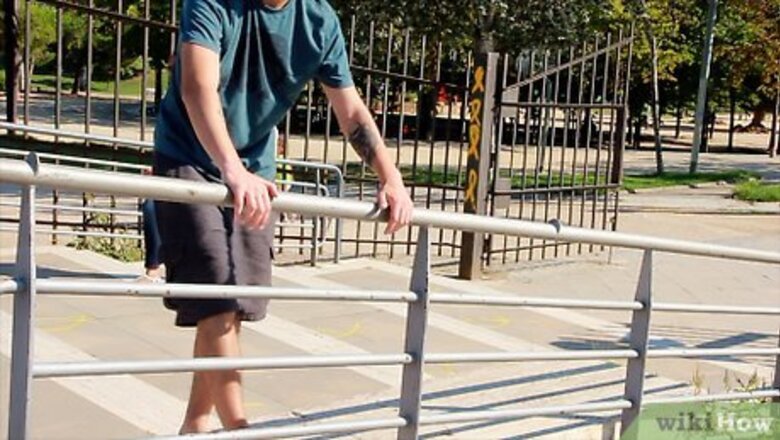
views
Doing a Safety Vault

Determine whether or not to do a safety vault. Also called a step vault, the safety vault is the best jumping technique for beginners. This jump can be done from a stationary, walking, or running start. If you’re intimidated by the idea of running towards the fence, do the jump from a walking or standing position. This jump works best for waist-high obstacles. If the fence is too high, you may trip or have trouble clearing the fence. Clear any debris from around the fence. If you land on debris you may twist an ankle.

Place one or both hands on top of the fence. Absolute beginners should use two hands. If you’re confident that you’re strong enough to guide yourself over the fence, use one hand. Lean forward, supporting your weight with your arms. If you’re nervous about jumping over the fence, test yourself holding yourself up for a few seconds. This will help you gauge your own strength.
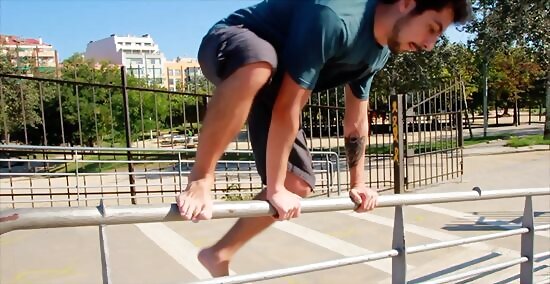
Hop into the air and rest your foot on the top of the fence. First, hop into the air. While airborne, place the ball of your foot against the top of the fence. This foot will help you balance and allow you to propel yourself off the fence. The faster you approach the fence, the more important this foot is for balance.
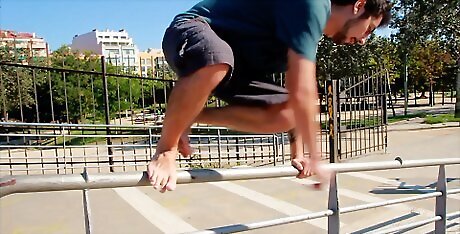
Bring your other leg over the fence. Curl your free leg against your body and bring your knee towards your chest. Guide your foot over the fence, using your outside foot for balance. As you move your leg, lift the hand closest to your legs away from the fence. This will give you more space to maneuver your legs. Keep your shoulders and head down as you move. Otherwise, your feet may catch on the edge of the fence and you’ll fall over.

Land softly. Push off slightly with your resting foot to help move yourself away from the fence. Your free foot will hit the ground first, followed by your resting foot. If possible, land on the balls of your feet to reduce the risk of injury. Point your feet and knees forward as you land. If you don’t, you may twist an ankle. Bend your knees as you land. This will help you avoid knee injuries.
Doing a Speed Vault
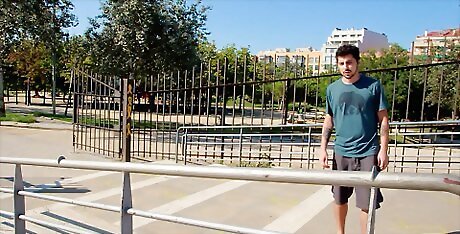
Determine whether or not to do a speed vault. Speed vaulting is popular with intermediate and advanced jumpers because they conserve momentum. You can jump over obstacles at high speed without slowing down or stopping. However, don’t attempt this jump unless you’re already comfortable doing a safety vault. Make sure the area you’re jumping into is clear of debris. Otherwise, you may land badly and injure yourself.

Run towards the fence. This jumping technique uses your momentum to carry you over the fence. Therefore, the faster you run, the better this technique will work for you. If you’re nervous about trying this jump, approach the fence at a brisk jog instead of a run. Approach the fence head-on. If you approach at an angle you won’t be able to clear the fence.

Place your dominant hand on fence. This will be your “support arm,” or the arm that carries you over the fence. Don’t slap your hand down onto the fence or you’ll lose momentum. Instead, gently and firmly place your hand down as you run.
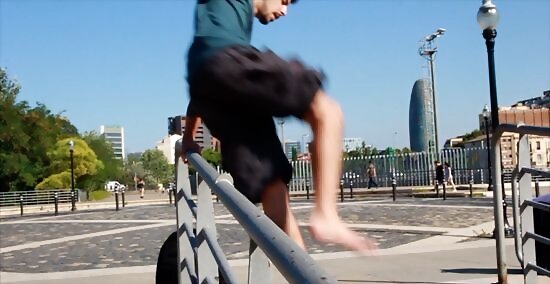
Kick your legs out to the side. Jump up quickly, kicking your outside leg into the air. Drive your knees upwards and to the side, one over another. Your body will naturally slant to the side parallel to the fence. Keep your shoulders facing forward as you jump. Keep your dominant arm straight as you jump. If your arm is curved you may not be able to support your body.
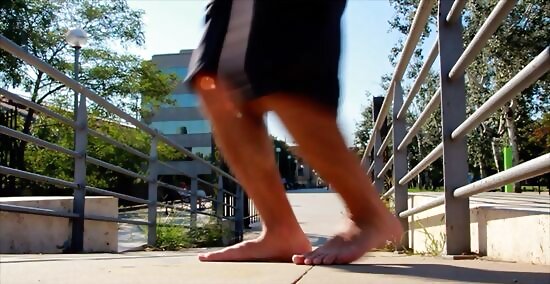
Land in an upright position. Land with your inside leg first and follow with your outside leg. Bend your knees slightly as you land to reduce the impact and protect your joints from injury. Your hand will leave the fence on its own as your momentum carries you forward. Keep your chest forward and continue running.
Doing a Monkey-Vault
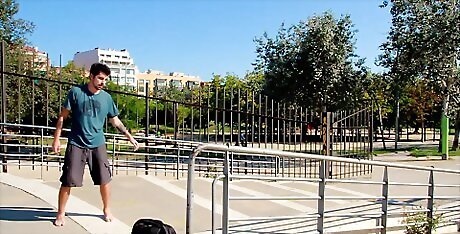
Determine whether or not to do a monkey vault. This jump is not recommended for beginners. If the fence has a steep drop on the other side you may hurt yourself while jumping. Similarly, make sure the ground is free of debris before jumping over an obstacle. Otherwise, you could twist an ankle when you land. The monkey vault is good for jumping waist-high fences and obstacles. However, if the fence is too high, you’ll have trouble clearing it with this jump.
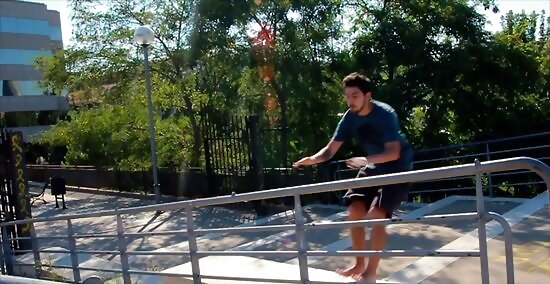
Run towards the fence with your arms extended. You will be using your momentum to carry yourself over the fence. If you’re intimidated by running towards the fence, practice an easier jump such as the safety vault until you’re more confident.
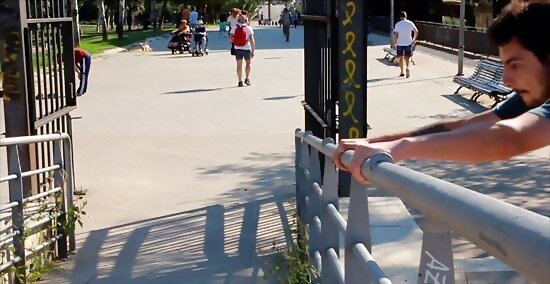
Place both hands on the fence. Once you’re about a foot away from the fence, firmly plant both palms on the fence. Your hands should be a shoulder-width apart. Lean forward into your hands and duck your head down. Don’t slap your hands onto the fence. If you do, you’ll lose some momentum.
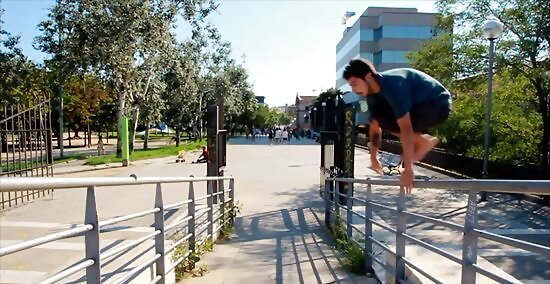
Jump over the fence. Keep your chest facing forward and bring your knees up to your chest as you jump. Duck your head and shoulders low to allow enough space underneath you for your legs. Your back will be parallel to the ground as you jump. This will give you room to move your feet underneath you and over the fence. Be careful not to clip your toes on the fence. This will happen if your head isn’t low enough and cause you to fall. Some people like to push with their arms after their feet clear the fence to help vault themselves further.

Land carefully. You can land on both feet at once or one after another. When landing, make sure to keep your knees slightly bent to reduce the risk of injury to your legs. Similarly, try to land on the balls of your feet to help protect your ankles. This will also help protect your knees by forcing them to flex as you land.














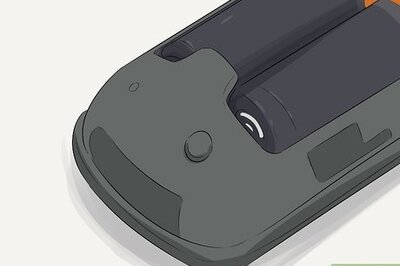




Comments
0 comment